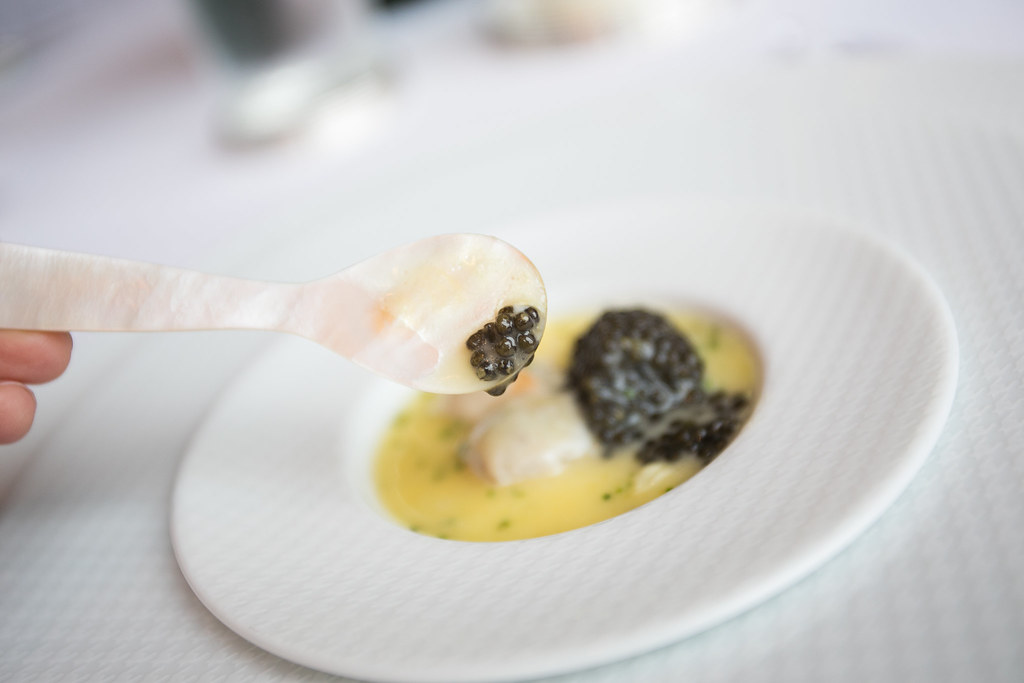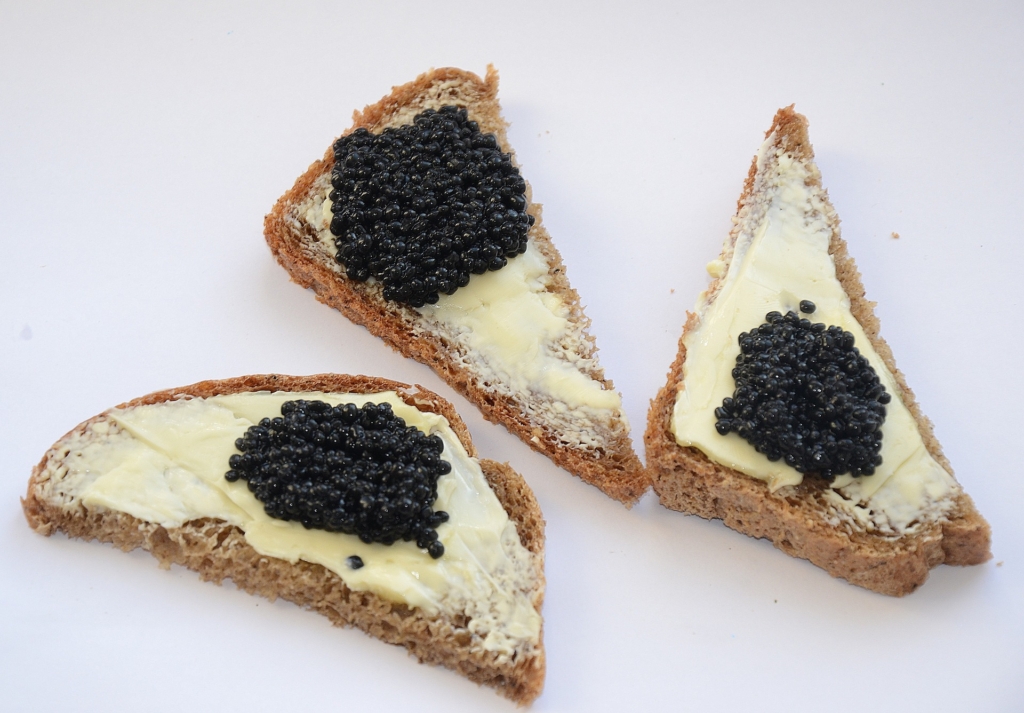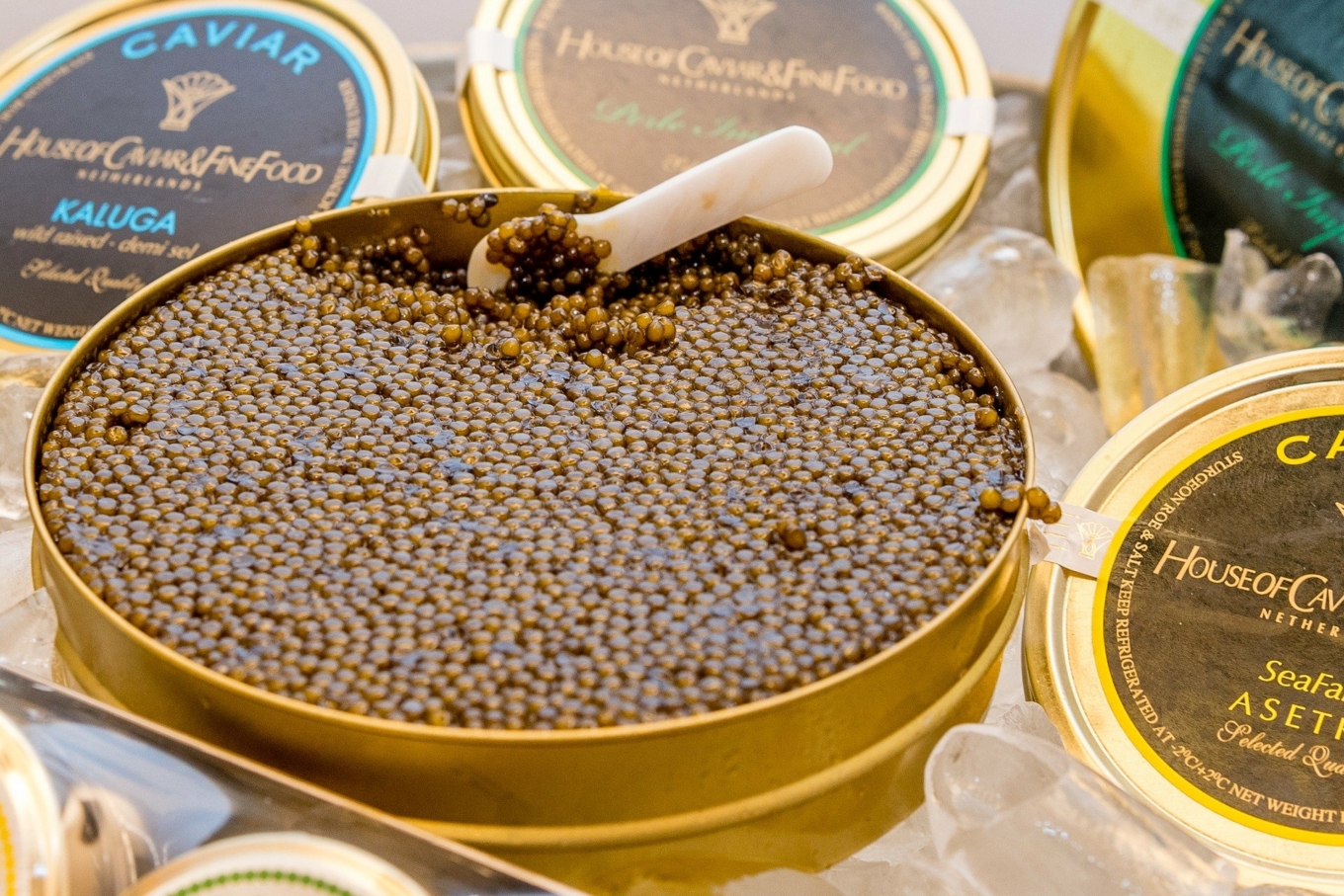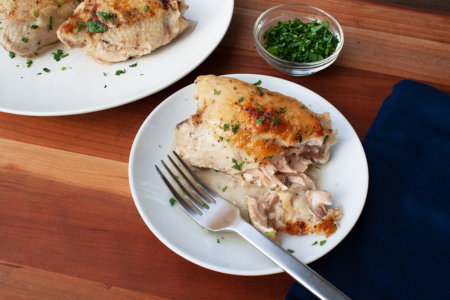Caviar, a lavish briny delicacy of fish eggs, is savored cold as a garnish in appetizers, pasta dishes, and delicious spreads. Read on to learn more about caviar, it’s food pairings, and how to serve it in the traditional way.
What Is Caviar?
Caviar is the unfertilized, salt-cured eggs of fish belonging to the Acipenseridae family, collectively known as sturgeon. Traditionally, the only source of caviar was wild sturgeon particularly in the Caspian and Black sea. Today, the majority of caviar is obtained from farmed sturgeon varieties as well as from the roe of other farmed fishes like trout, salmon, carp, and whitefish as a practice to minimize overfishing from natural reservoirs. Caviar is available in both pasteurized or unpasteurized forms. While the unpasteurised form is regarded to have a finer flavor, contrarily, the pasteurised one is recommended by health experts to minimize the risk of foodborne illness.

What Does Caviar Taste Like?
Caviar is salty, fishy, and buttery with sweet and nutty undenotes. Texture-wise they’re separated, firm, smooth and pop in the mouth followed by a buttery-creamy consistency that melts, giving off a rich, palatable experience. Some people define its taste as “ocean water” because of the flavor. However, different types of caviar differ in their taste and appearance, especially based on their quality. While some are more fishy, others are more briny in flavor.
How to serve caviar?
Caviar is traditionally served as an appetizer in a non-metallic pot placed over crushed ice. As the eggs are prone to damage during shifting to other serving containers, they’re often left inside the tins they come in. The serving cutlery for caviar should be made from glass, or more traditionally, mother-of pearl. The metal cutlery is especially avoided while serving caviar as it can initiate an oxidative reaction, resulting in a metallic-tasting caviar.

Caviar Pairings
While caviar is often savored alone to truly enjoy it’s strong and unique flavor, you’ll find some common accompaniments to this delicacy in any fine-dine restaurant. To name a few, crème fraiche, chopped onions, lemon wedges, mini-potatoes, hard-boiled eggs, omelettes, buttered toast, blinis, and unsalted crackers comes at the top.
Since caviar offers a punch of intense flavors and is very expensive, it’s always recommended to use it in smaller quantities. On top of that, caviar can overpower main course meals, so it’s mostly used in appetizers. However, you can get creative with this delicacy and use it in an array of light and mild flavored dishes. Having said that, caviar is never cooked but garnished over meals just when they’re ready to serve.

Popular candidates for caviar are other savory delicacies, seafood, and appetizer dishes just like poached oysters, smoked salmon, squids, crabs, lobsters, and deviled eggs. Sometimes, caviar is topped over pasta dishes, and seafood salads. You can try adding a teaspoon of caviar over the following recipes to turn them into luxurious meals.
● Asparagus and Eggs with Dijon Vinaigrette
● Lobster salad

Among the popular beverages to pair with caviar, vodka, champagne, and sparkling wines are considered excellent choices. There’s a complete guide on wine pairings depending on different caviar varieties.
Feature Image: Michael Weber from Pixabay



